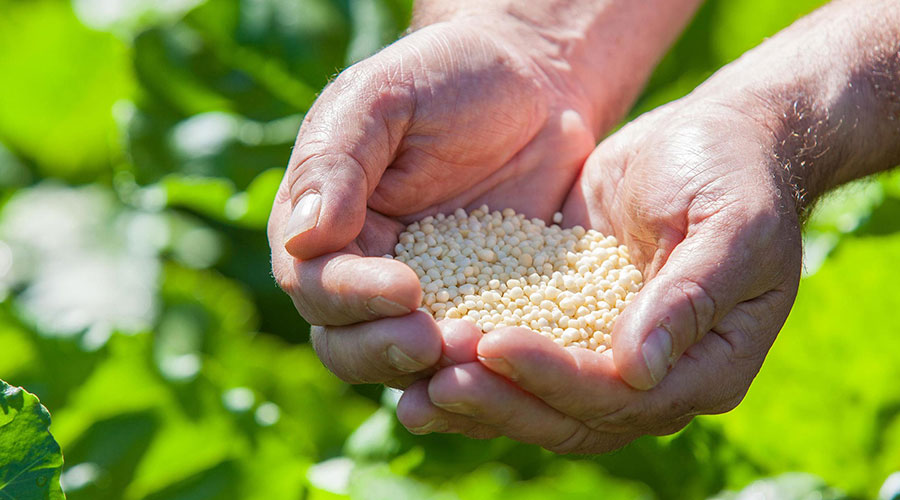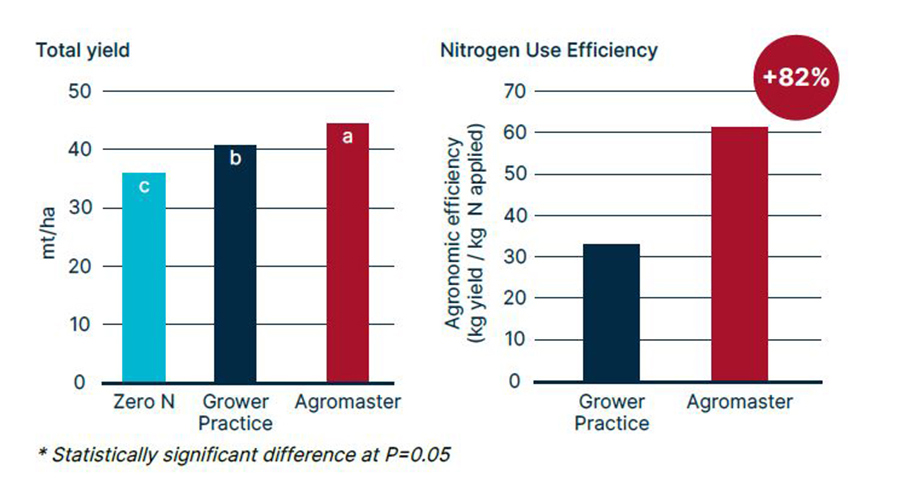Advertiser content
Controlled release fertilisers – the key to nutrient efficiency
 © ICL UK & Ireland
© ICL UK & Ireland ICL is helping farmers get the most from their fertiliser inputs with the help of controlled release fertilisers (CRF).
With one single application of controlled release fertilisers one can manage the nutrition during a complete crop cycle.
Coated fertilisers make the fertilisation plans much easier and it reduces the environmental impact.
Efficient use of crop nutrients is becoming increasingly important for issues that range from feeding a growing world population, to minimising risk of environmental harm and making best use of scarce, and increasingly expensive inputs to crop growth.

© ICL UK & Ireland
Raising the yield of the land
For almost 200 years, agriculture and horticulture has used the addition of manufactured – and/ or processed – fertilisers to enhance crop growth by supplying the key elements that plants need to boost yield and quality.
The benefits are well documented. Fertilisers have played an important part in significantly raising the yield of the land, so ensuring that every hectare supports more and more of the world’s population.
Estimates show that between 1960 and 2020, the number of people that can be fed from a hectare of land has more than doubled to 5.6.
Innovations such as controlled release fertilisers (CRF), that match nutrient availability to crop need, will play an important role in meeting these future demands.
Applied nutrient losses
Fertilisers can indeed double or triple farm productivity: for every single kg of nutrients applied, farmers obtain approximately 5-30 kg of additional produce (although this will vary per crop).
Yet the statistics on average nutrient use efficiency – the proportion of nutrients actually used by crops in the first year after application – are stark.
For fertilisers applied to major cereal crops, nitrogen efficiency is around 40-65 percent, potassium efficiency in the region of 30-50 percent and phosphorus efficiency just 15-25 percent.
The above figures are for plots managed by agronomic researchers. Values for nitrogen use efficiency on fields managed by farmers are even less encouraging.
Up to 70-80 percent of applied N can be lost when fertilisers are improperly managed. (Fertilizer International 474, p32).
Application rates versus uptake
Despite the successful increase in crop production, to which fertilisers have made a significant contribution, there remains the dilemma.
Crop nutrients are applied to crops on a few occasions in a growing season; whereas, crops take up nutrients a little at a time hour by hour and day by day.
Early in the season as small annual crops establish, or as perennial crops emerge from winter dormancy, uptake is quite small each day.
Many fertilisers are soluble and volatile, so applied early in the season large amounts of nutrient are available – far more than the crop’s immediate need.
How nutrients are lost
Nitrogen not taken up can be lost, either through leaching – a process whereby the nutrient is washed through the soil and into drainage systems – or through volatilisation.
The latter is particularly significant from urea based fertilisers where the element is converted to ammonia and can be lost to the atmosphere as gas.
For the farmer, or grower, these losses affect crop and economic performance. The crop does not have some nutrients for growth and the grower loses the value of the fertiliser that is lost.

© ICL UK & Ireland
Environmental impact
For the environment, the impact is also potentially bad. Fertilisers leached to waterways can, in extreme conditions cause algal blooms that threaten aquatic life; it can also reduce water quality.
Losses to the atmosphere can add to the problems of climate change. Ammonia, while not one of the gases normally classed as greenhouse gas, is injurious to the atmosphere and health.
How to improve NUE
Having the right nutrients available to match crop needs plays an important part in achieving a high nutrient (or nitrogen) use efficiency (NUE).
This is a measure of how well all the nutrients come together for optimum crop performance.
The major nutrients – nitrogen, phosphorus, potassium – as well as calcium, magnesium and sulphur are linked, in as much as a shortage of one can impair the ability of a crop to fully utilise other elements that may be in plentiful supply.
CRF technology – meeting the needs of the crop
Help is at hand in the form of ‘controlled release fertilisers’ (CRF) that using smart technology provides nutrition at a rate that matches much more closely the availability of nutrients to the plant’s need.
The principle is simple, the technology complex. The E-Max Release Technology developed by ICL is described as an ‘innovation’ in controlled release nutrients.
In essence, the fertiliser is covered in a special coating that – once in contact with the soil and associated moisture – begins to take up water.
As the moisture content builds up in each granule of fertiliser, so the osmotic pressure increases and nutrients start to ‘escape’ into the soil via micropores in the coating.
Thus the nutrients disperse gradually into the zone around the roots and are available as the plant requires it. This minimises the risk of valuable nutrients being lost from the crop and ending up causing adverse effects to air or water.
ICL Fertilisers produce a range of blends and can tailor the contents of each fertiliser to the needs of specific crops.
Save money by reducing applications
There is also the question of cost. Every time fertiliser is applied there is an application cost.
According to the latest John Nix Pocketbook1 applying granular fertiliser costs around £7.50/ha, while liquid fertiliser application can be as much as £10/ha. Therefore, every application has a significant cost.
Today, the question of cost is exacerbated by the significantly increased cost of fertiliser, especially nitrogen which means nutrients need to be kept in the soil not just for environmental, but also economic reasons.
Grow potatoes more efficiently
82% increase in Nitrogen Use Efficiency (NUE) was demonstrated in a 2021 seed potato trial executed by Eurofins.
ICL Agromaster (Controlled Release Fertilisers) showed a 10% increase in yield, 82% increase in nitrogen use efficiency and a positive return on investment.
For the full potato trial report PDF please email plantnutrition@icl-group.com

Today, CRF products tend to be used mainly in high value crops including field and root vegetables, fruit and certain amenity sectors.
However, as the cost of nutrients increases, it is likely that this technology will find a use in broad-acre crops as growers seek that elusive goal of achieving high nutrient efficiency.
ICL CRF technology is available in three different product ranges:
- ICL Agroblen gives growers complete control over their nutritional programme. Agroblen contains a 100% coated NPK granule to provide a controlled release of the nutrients over a pre-determined length of time. With Agroblen, growers can apply multiple applications or just once a year depending on the crop’s needs. The ideal combination of efficiency and simplicity.
- ICL Agromaster combines ICL’s advanced technology with specially selected conventional granules. This powerful combination provides nitrogen control and high-quality performance in one uniform product.
- ICL Agrocote products are N, P or K coated products based on one of the ICL coating technologies. These technologies provide from 1 to 6 months release longevity.
Visit our website to find out more.
1 John Nix Pocketbook for Farm Management, 52nd Edition, 2022
Provided by
ICL are experts in crop nutrition, such as Controlled Release Fertilisers (CRF). We are also market leaders in phosphate, potash and Polysulphate® based fertilisers. We offer high quality products to help farmers increase productivity, in a more sustainable way.
